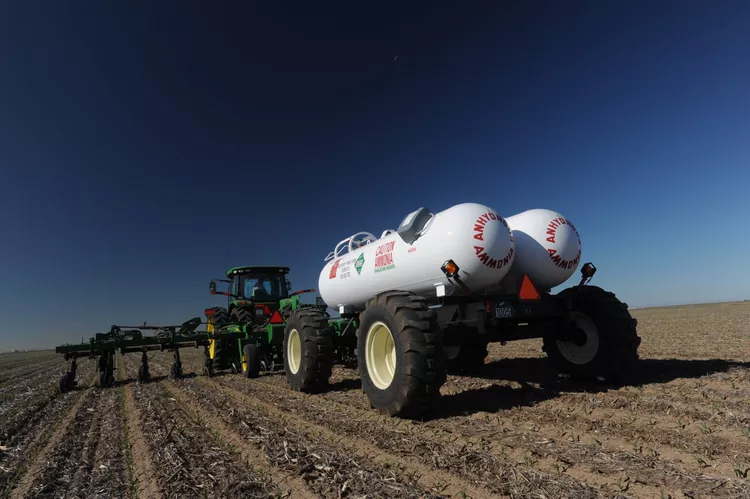|

By
Chuck Abbott
October 18, 2023
Lower fertilizer costs will ease breakeven challenge
for farmers, says Purdue
Commodity prices are forecast to fall in 2024 but so
will crop production expenses, said agricultural economist Michael
Langemeier of Purdue University.

Commodity prices are forecast to fall in 2024 but so will crop
production expenses, said agricultural economist Michael Langemeier of
Purdue University. “Moderation in input prices, particularly
fertilizer prices, is likely to result in lower breakeven prices in
2024.”
Farm production expenses were forecast by the USDA at a record $458
billion this year, up nearly 7% from 2022, when expenses surged by
15%. Fertilizer and fuel costs soared in 2022 and were a sore point in
farm country. Fuel prices would decline and fertilizer prices would
hold steady this year, according to an August USDA estimate.
To offset high production costs, farm groups have called for higher
reference prices, which would make crop subsidy payments more likely
in the new farm bill. A 10% increase in reference prices could boost
crop subsidies by $20 billion, according to one analyst. Lawmakers
have not agreed on how to offset the expense and stay within spending
limits. The farm bill is on the legislative back burner while the
House selects a new speaker and Congress works on government funding
bills.
“Breakeven prices for corn and soybeans are expected to decline from 5
to 10% in 2024 after increasing sharply in 2022 and 2023,” wrote
Langemeier, after comparing changes in farm input costs with the
overall U.S. inflation rate. Fertilizer, diesel fuel, and ag chemical
prices have fallen steeply in the past year — nearly 50% for anhydrous
ammonia, a nitrogen fertilizer.
“Despite the large decreases in the past 12 months, fertilizer prices
are still well above what they were in 2020,” said Langemeier. “The
August 2023 price for anhydrous ammonia is still 20% higher than it
was in 2020. The input price [increases] for supplies and repairs,
machinery and wages were approximately 2.5%.”
Over the long term, farm input prices tend to track the U.S. inflation
rate, more so for machinery and labor than for feed, seed, fertilizer,
and fuels, said Langemeier.
Although costs are expected to be lower in 2024, corn and soybean
growers would still face breakeven prices of more than $5 a bushel for
corn and $12 a bushel for soybeans in Illinois, said a team of
Midwestern agricultural economists in August. Growers were more likely
to make money with soybeans than corn, they said in estimating
expenses and revenue from 2024 crops.
“Reductions in fertilizer prices are the main factor in the non-land
cost decline,” said the economists, writing at the farmdoc daily blog.
“No other costs are projected to decline.”
Green Play Ammonia™, Yielder® NFuel Energy.
Spokane, Washington. 99212
509 995 1879 Cell, Pacific Time Zone.
General office: 509-254 6854
4501 East Trent Ave.
Spokane, WA 99212
|